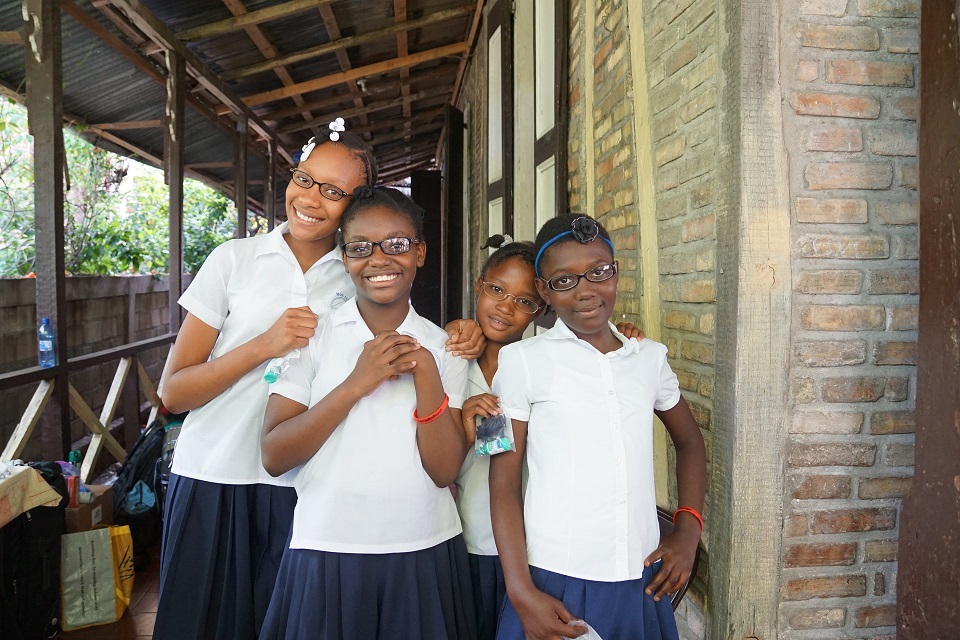As one of the world’s leading and largest graduate business schools, INSEAD brings together people, cultures and ideas to develop responsible leaders who transform business and society. Our research, teaching and partnerships reflect this global perspective and cultural diversity.
With locations in Europe (France), Asia (Singapore), the Middle East (Abu Dhabi), and now North America (San Francisco), INSEAD's business education and research spans four regions. Our 166 renowned Faculty members from 41 countries inspire more than 1,500 degree participants annually in our Master in Management, MBA, Global Executive MBA, Specialised Master’s degrees (Executive Master in Finance and Executive Master in Change) and PhD programmes. In addition, more than 11,000 executives participate in INSEAD Executive Education programmes each year.
INSEAD continues to conduct cutting-edge research and innovate across all our programmes. We provide business leaders with the knowledge and awareness to operate anywhere. Our core values drive academic excellence and serve the global community as The Business School for the World.
CLUED-iN spoke with the authors of the INSEAD blog “Using Innovative Finance to Scale Up Corporate Base-of-Pyramid Initiatives,” Jayanth Bhuvaraghan, former Chief Mission Officer, Essilor International, and Jasjit Singh, INSEAD Professor of Strategy. They shared their insights into the evolving space of impact investment and innovative financing and why impact measurement is key to attracting investment to scale inclusive businesses.
Can you expand a bit on how the outcome-based, up-front capital model you describe in your article lays the groundwork for large-scale investment from commercial investors?
Jasjit: Actually, it brings in two kinds of investment. In the beginning, it might be investments from people who have the appetite to offer some concessions. It might not be commercial in the sense of mainstream banks and investors. The goal when we are talking about this funding is that you have an investor who actually cares about the social outcomes that you are generating. At the same time, of course the investors expect returns, but very often the investors have the appetite to take some discounts. There is a perception with IBs at the beginning that they are riskier. In the long term, once we can show that the model works, that is where the mainstream capital at the larger scale will come in. It’s very hard to monetize profit in the short run. The hope is that once enough of these models come to a level of maturity or scale, at 10X or 100X the scale, the model has been de-risked, there are also economies of scale and there is a bigger potential even for mainstream capital who might not even care about impact, because they see that this is a perfectly viable investment.
Jayanth: Philanthropic donors are slowly moving away from simple grant making. They are more and more looking at measurable outcomes. This gives them better visibility and also a compelling reason to do more. I think outcome-based financing offers a very good option for attracting capital for inclusive businesses. It’s a kind of win-win for everybody: the donor is assured that the outcomes are met, the players on the field have access to money to scale up their operations, and the investors are happy to get a reasonable return and at the same time support social impact. It’s a great business case that takes care of all the players in the game. Having said that, it has not yet grown into a huge, successful and replicable model. There is a lot of fine tuning that needs to be done. But I think we are learning as we are walking and we are moving in the right direction. I am sure in the coming years we will see a lot more innovation in this area and new models and structures will emerge.

Image by Syauqi Fillah on Pixabay
Do you think investors are now seeking out new business models that have a social impact?
Jayanth: Investors across all categories are definitely seeking out new business models; more than business models, investors are seeking out ways to reach customers at the base of the pyramid. It’s not a question of just doing good, it’s a question of driving long-term business growth. When you have seven and a half billion people in the world, with a large majority of them living in developing countries, who cannot afford to pay as much as their counterparts in the developed world, what do you do? Do you just leave them and hope they one day they make enough money to buy your products or do you create products and solutions to satisfy their needs at the price points they can pay? The expectation is to create products and services adapted to the needs of the BoP consumers. In my own experience with shareholders, this is what they love – they want to see companies doing good in areas where they can use their resources to create new markets that will create prosperity for everyone.
Jasjit: Yes. There are actually two segments of investors. One is the segment that genuinely cares about impact and wants to solve the world’s problems. In this bucket you can think of philanthropists, government funding and impact investors. Then there is another bucket of investors who primarily care about making money, but they increasingly care also about social outcomes, not because it’s their primary mission, but because increasingly, this is the expectation of society from them. Increasingly, their investors, or the next generation of investors, and the tightening of regulation around the world, put pressure on them. Some of the conversations in this regard are more mature on the environmental side, but I think the pressure on the social side is increasing too.
Both of these categories of investors are growing. The first category is growing faster, but starting from a smaller base. The ESG category is also growing, from a much larger base. The impact investing space has double-digit growth, with about 1 trillion dollars of assets under management, and this has come almost out of nothing over the past fifteen years, while the ESG space has had a longer track record. Depending on who you ask, you will hear people say that one-fourth to one third of assets under management overall has some degree of responsible or sustainable investing. ESG is a fairly large chunk of that bucket, but there are other pieces, such as exclusion, which can be positive or negative - not investing in oil or investing only in health care, for instance.

Image by Heather Suggit on Unsplash
Can inclusive businesses provide an alternative for investors because their social impact is part of the business model?
Jayanth: Yes absolutely. I am a big believer in inclusive business. When you have a large, addressable market and need, it is the responsibility of organizations to innovate and develop products and services to address the growing aspirations of these consumers. I’ll give you an example: eyeglasses. The average cost of a pair of glasses is around three days of your wages. In the BoP (base of the pyramid) markets, where the consumers earns less than $5 a day, Essilor took this as a challenge to create a new pair of glasses that could be sold between $10 -$15 through product innovation and reducing the cost to serve. This opened up a new market. But importantly, by giving better vision it was driving huge social impact and gave an opportunity to scale globally. So there is no trade off: you drive both business growth and social impact.
Jasjit: The nice thing about inclusive business models is that you have the potential to say, “This is really an investment, not a grant.” You can think about giving glasses for charity, versus selling eyeglasses at a really reasonable price point. It might take you longer to get to your first hundred thousand customers if you invested the money as seed capital, as opposed to just giving away the money, but in the longer run you are enabling eyeglasses for millions of people and not just thousands. Very importantly, these two should be seen as complements. I don’t think we should take the view that a business model is always better than giving it away, because there will always be a segment that cannot afford it. You need access to free vaccines, for example. Having said that, the hope still is that we don’t make philanthropy bigger than it needs to be. There is a segment that can afford the eyeglasses, but it’s not just about affordability, but also access and education. The nice thing about being able to sell rather than give is that you know that the product has value, because if given for free, everyone will take it, even if they don’t use it. This is one way to tap into this mass market that is below middle class, but not in extreme poverty. Today the better phrase to use than base of the pyramid is the diamond – the biggest chunk of people today are in the lower middle class or just below. They will not always remain at these income levels, so companies that get in earlier build in the brand, knowledge and services at these segments, can benefit.
In your opinion, how can inclusive businesses best showcase their social impact and attract broader investment?
Jayanth: I think being an IB entrepreneur is a lot tougher than any other entrepreneur. Entrepreneurs should be more forceful in presenting their business case talking about the economic value and the social impact they create for investors. Talk about the entire value proposition. The entrepreneurs should not be shy to dream big and have plans to move away from their community based projects to the global arena. I think this change of mindset is absolutely important to create impact.

Jasjit: I think this is where the measurement piece becomes very important. Anytime we get into the innovative finance space, you have to be very clear on the metrics. It’s not just metrics; it’s also being very clear on your additionality. What is the counter-factual? What would have happened if you hadn’t come in? And I think that raises the bar on impact measurement, because it’s no longer just about metrics, but it’s also about making a case. This is where field experiments also come in to see what interventions are working and not working. Previously they would just say, “We meet SDG 2,5, and 7” for example. You need to be much more clear about your area of change. What problem are you solving, how do you propose to solve it, and how will you prove to us that you have solved this social problem? This measurement can no longer be measurement you do yourself; it has to be third party validated. You need to have an independent assessment. There has to be a willingness in the business world to become much more sophisticated in measuring impact at a level that is comparable to that in the development space. That’s the only way to attract money through collaboration and innovative financing.
How important is outcome and impact measurement for inclusive businesses to attract investment and scale their businesses?
Jayanth: Impact measurement is the key, it’s the touchstone. It tells you whether what you are doing is right, if you are getting the right results, or if you are on the wrong path. It’s a very important piece, and it’s also a sector that needs to evolve and adapt to help the overall development financing space. This is an evolution. I believe strongly, in the next five to six years there will be a huge development in the innovative financing space driving inclusive businesses because we can’t afford to ignore the majority of the world which have growing needs of products and services.